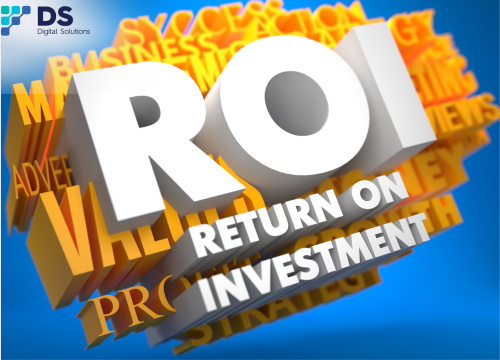Robotic process automation (RPA) is an effective tool that helps businesses (of any size) enhance innovation, improve productivity, and provide customers with a much better customer experience. In the past few years, robotic process automation has become an important automation technology across many industries. Using software robots to communicate with business applications reduces the workload on employees and streamlines processes.
Sounds interesting? Well, it is.
Even so, businesses want to know if RPA solutions will be worth the up-front advantages they offer.
IMPORTANCE OF RPA ROI METRICS
An ROI can be a business justification for any project. By demonstrating that RPA will improve customer experience, innovation, productivity, and cost control, leaders can gain buy-in across the enterprise and ensure the success of their initiatives.
An ROI can be a business justification for any project. By demonstrating that RPA will improve customer experience, innovation, productivity, and cost control, leaders can gain buy-in across the enterprise and ensure the success of their initiatives.

In general, ROI is divided into three primary phases:
- Initial
ROI benchmarks and other data from other automation implementations can help project leaders make the case for RPA. By understanding what the technology can deliver, companies can plan more effectively for its implementation and ensure the project is given the resources it needs.
- Interim
RPA implementations can develop and mature over time, but an organization must have an understanding of the impacts of the project, including those which are more difficult to quantify, like customer experience. ROI data can be collected to help validate initial assumptions, identify areas for improvement, and build support for further initiatives.
- Ongoing
As RPA continues to evolve, users apply it to an increasing number of business processes. It is important for organizations to track the ROI of their automation initiatives and to seek out other areas where automation could be beneficial.

6 WAYS TO MEASURE THE ROI OF RPA
Although there are several metrics available to assess the quality of benefits associated with RPA, tracking the Return on Investment also allows you to plan accurately for the company-wide adoption of automation in the future.
Following are a few KPIs (key performance indicators) that help to measure the return on investment of an RPA deployment so that it can deal with all your concerns about streamlining processes and cost reductions.
Choosing the right pilot project
To automate their processes effectively, businesses need to choose the right processes. When given a chance to pick up repetitive or error-prone processes, you dramatically increase your ROI.
Accurate bot counts and proper utilization
After deploying a multitude of bots, businesses wonder why they haven’t been able to
achieve the expected business value. To achieve the desired ROI, it is imperative to make effective use of bots while keeping in mind both short-term and long-term business objectives.
Proper programming
Businesses need to understand that software robots follow instructions, and will only perform tasks assigned to them. To provide the best possible ROI, bots must be configured for efficient and faster execution of a wide range of tasks.
Process speed estimation
A speed estimate plays an important role in evaluating the ROI of RPA, particularly for back-office processes. After the bots complete a given task, it is necessary to compare the time taken from input to output to determine whether the process velocity has increased. Since software robots work continuously without taking breaks, tasks associated with the processes can be completed much faster.

Improved compliance
Robotic process automation can greatly simplify the compliance hassles that businesses usually face. By including automatic compliance checks in the workflow, all compliance & regulation criteria can be easily met. Moreover, robots are also capable of producing regulatory reports, thus improving both the speed and the accuracy of processes.
Enhanced accuracy
Faster and more accurate outputs indicate increased productivity of the business. E.g., By reducing the manual workload, robots improve output quality and compliance as well. As a result, it is safe to conclude that the rise in productivity is a result of the improved outcomes obtained through robotic process automation.
Increasing business ROI with RPA
Unquestionably, RPA processes are on the upswing due to their ability to provide rapid ROI
and increased control. However, it is not wise to evaluate RPA technologies solely based on their financial benefits – particularly if they result from labor savings. Although this technology does not utilize all of RPA’s capabilities, there are several business benefits to this approach. Below are some aspects of RPA that boost the ROI of businesses:

